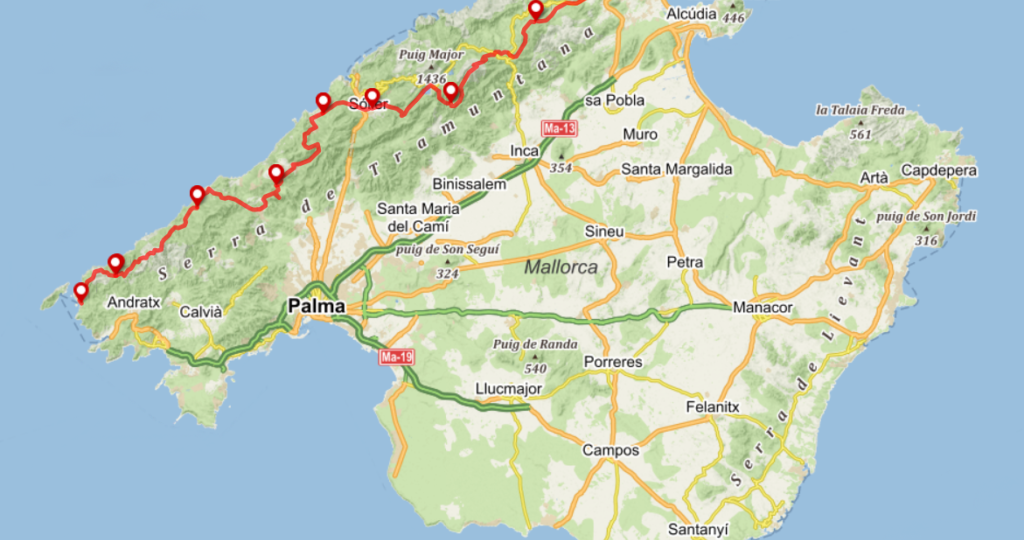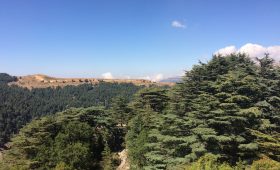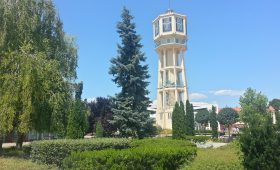Discovering the GR221 Trail in Mallorca
Embark on a journey through the heart of Mallorca by exploring the GR221 Trail, also known as the “Dry Stone Route.” This renowned hiking path stretches approximately 140 kilometers across the Serra de Tramuntana, a UNESCO World Heritage site since 2011. The trail is celebrated for its historical dry stone walls, constructed without mortar, which reflect Mallorca’s rich agricultural heritage.
Best Time to Visit
The ideal seasons for hiking the GR221 Trail are spring (April to June) and autumn (September to November). During these times, the weather is mild, making it perfect for outdoor activities. Summer can be intensely hot, while winter may bring rain, which can make the trail slippery and challenging.
Getting There
Travelers can reach Mallorca via Palma de Mallorca Airport, which is well-connected to major European cities. From Palma, public transportation is available to the trailhead in Andratx. Alternatively, ferries from Barcelona or Valencia provide a scenic route to the island.
Trail Highlights
- Breathtaking Landscapes: The GR221 offers a diverse range of scenery, from rugged mountain peaks to stunning coastal views, providing endless opportunities for photography and nature appreciation.
- Historical Sites: Along the trail, hikers can explore ancient watchtowers and medieval monasteries, offering a fascinating glimpse into the island’s storied past.
- Local Cuisine: The charming villages along the route are perfect for sampling traditional Mallorcan dishes such as sobrasada and ensaimada, providing a taste of local culture.
Accommodations
The GR221 Trail offers a variety of accommodations, including guesthouses, rural hotels, and mountain refuges. It is advisable to book in advance, especially during peak hiking seasons, to ensure availability.
Trail Stages
The official GR221 route is divided into eight stages, each offering unique challenges and experiences:
- Stage 1: From Port d’Andratx to Estellencs, a 16 km trek with moderate difficulty, featuring views of Sa Dragonera Island.
- Stage 2: Estellencs to Esporles, a 14 km hike with intermediate difficulty, showcasing ancient royal paths and dry stone landscapes.
- Stage 3: Esporles or Valldemossa to Deià, a 7.5 km easy walk through wooded areas with Mediterranean views.
- Stage 4: Deià to Port de Sóller, a 10 km trek through olive groves with stunning sea vistas.
- Stage 5: Port de Sóller to Tossals Verds, a challenging 28 km hike with significant elevation changes, transitioning from orange groves to mountainous terrain.
- Stage 6: Tossals Verds to Lluc, a 15 km mountainous trek with moderate difficulty, offering impressive forested landscapes.
- Stage 7: Lluc to Pollença, a 17.5 km hike through oak forests, featuring the Son Amer hermitage and Lluc Monastery.
- Stage 8: Pollença to Port de Pollença, a 6.7 km easy walk, ending with the refreshing sight of the sea and distant views of Cap de Formentor.
Practical Tips
While many stages of the GR221 are family-friendly, some sections require a good level of fitness due to steep inclines. Local guides and tourism offices can provide valuable advice and maps. Note that some parts of the trail are less well-marked, so preparation is key.
It’s generally easier to hike the GR221 from Pollença to Andratx, as this direction features more downhill sections, particularly between Lluc and Sóller. Despite the proximity to villages, water sources are limited, so hikers should carry sufficient water, food, sun protection, appropriate clothing, and a basic first-aid kit.
Advance reservations for accommodations are recommended, especially during peak tourist seasons. Hiking in spring or autumn offers less crowded trails and easier booking options, while winter provides spectacular, albeit cooler, landscapes.
Whether you’re an experienced hiker or a curious traveler, the GR221 Trail offers an unforgettable adventure through the natural and cultural wonders of Mallorca.




